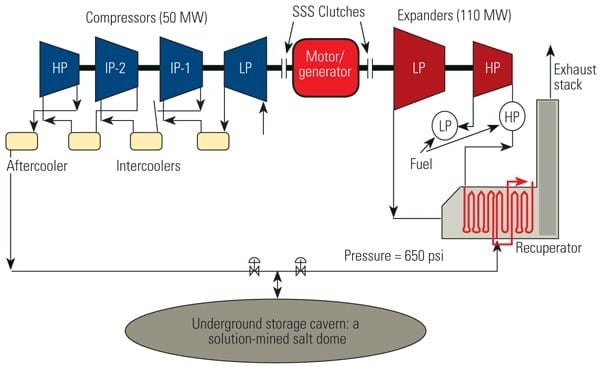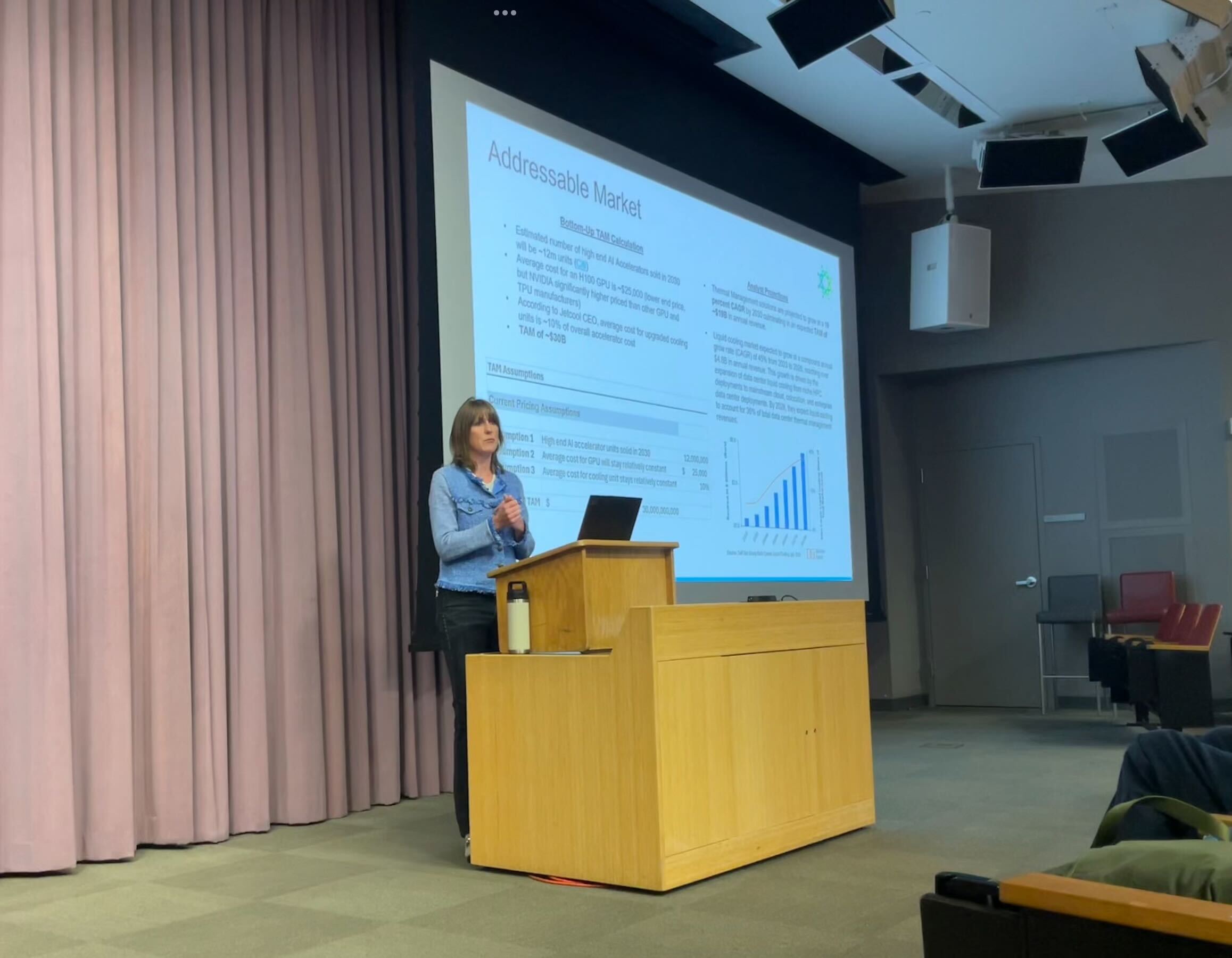Energy Poverty Is Africa’s Greatest Barrier to Realizing AfCFTA, Says NEPAD CEO – African Energy Chamber

Addressing Energy Poverty to Achieve Sustainable Development Goals in Africa
Energy Access as a Prerequisite for Sustainable Development
A report from the G20 Africa Energy Investment Forum identifies energy poverty as the principal barrier to the successful implementation of the African Continental Free Trade Area (AfCFTA). This deficit directly impedes progress towards several Sustainable Development Goals (SDGs).
- The lack of energy access fundamentally undermines efforts to achieve SDG 7 (Affordable and Clean Energy).
- This, in turn, obstructs the realization of SDG 8 (Decent Work and Economic Growth) and SDG 9 (Industry, Innovation, and Infrastructure), which are foundational to the AfCFTA’s success.
- Nardos Bekele-Thomas, CEO of the African Union Development Agency (AUDA-NEPAD), stated that scaling up investment in integrated energy infrastructure is critical for meeting the continent’s Agenda 2060 objectives and its SDG commitments.
Strategic Initiatives for Integrated Energy Infrastructure
To address these challenges, AUDA-NEPAD is spearheading several initiatives aimed at creating a unified continental energy market. These programs are designed to advance SDG 9 by building resilient infrastructure and fostering cross-border cooperation in line with SDG 17 (Partnerships for the Goals).
- The Continental Master Plan (CMP): This plan seeks to integrate Africa’s power transmission networks into a single electricity market, envisioned as the world’s largest interconnected system. The CMP directly supports SDG 7 by facilitating the cross-border trade of solar, hydropower, and gas resources to enhance energy security for all 55 nations.
- The Service Delivery Mechanism (SDM): To overcome the shortage of bankable projects deterring investment, the SDM provides technical expertise to accelerate the development of complex, cross-border energy projects. This mechanism acts as an accelerator, moving projects to a finance-ready stage and contributing to the infrastructure targets of SDG 9.
- The NEPAD Public-Private Partnership Program: This program vets regional projects to signal their viability to global investors. It is a key tool for mobilizing private sector capital, essential for achieving SDG 17 by strengthening global partnerships for sustainable development.
A Corridor Approach to Investment and Economic Empowerment
AUDA-NEPAD is adopting a strategic approach to infrastructure development that aligns with multiple SDG targets.
- Regional transmission projects are being packaged as strategic corridors rather than standalone initiatives. This method maximizes economic impact and strengthens investor confidence, fostering progress on SDG 8 and SDG 9.
- The vital role of African multilateral financial institutions in mobilizing international capital is underscored, reinforcing the partnership principles of SDG 17.
Linking Energy to Broader Socio-Economic Goals
The report concludes that the objective of energy infrastructure extends beyond electricity generation. The ultimate goal is to create a positive feedback loop for sustainable development.
- Energy must empower small and medium-sized enterprises (SMEs), enable digital services, and unlock productive uses across all economic sectors.
- This holistic vision demonstrates the interconnectedness of the SDGs, where achieving SDG 7 becomes a catalyst for significant progress on SDG 8 (Economic Growth) and SDG 9 (Innovation and Infrastructure).
Analysis of SDGs, Targets, and Indicators
1. Which SDGs are addressed or connected to the issues highlighted in the article?
-
SDG 7: Affordable and Clean Energy
The article’s central theme is overcoming “energy poverty” in Africa. It discusses the need to scale up investment in energy infrastructure, create an integrated continental electricity market, and utilize diverse energy resources like solar, hydro, and gas to provide power to all 55 African countries.
-
SDG 9: Industry, Innovation, and Infrastructure
The article heavily emphasizes the development of resilient, cross-border infrastructure. The Continental Master Plan (CMP) aims to integrate power transmission networks, creating the “world’s largest interconnected system.” This infrastructure is presented as essential for economic development, trade, and enabling other sectors.
-
SDG 8: Decent Work and Economic Growth
The article links energy access directly to economic activity. It states that energy must “empower SMEs, enable digital services, and unlock productive uses across sectors.” This highlights the role of energy infrastructure as a foundation for sustainable economic growth and boosting intra-African trade through the AfCFTA.
-
SDG 17: Partnerships for the Goals
The article describes a multi-stakeholder approach to solving Africa’s energy challenges. It mentions the role of the African Union Development Agency (NEPAD), the use of a “Public–Private Partnership Program” to attract global investors, and the importance of African multilateral financial institutions in mobilizing international capital.
2. What specific targets under those SDGs can be identified based on the article’s content?
-
Target 7.1: By 2030, ensure universal access to affordable, reliable and modern energy services.
The article directly addresses this by identifying energy poverty as a major obstacle and outlining a plan to strengthen energy security for “all 55 countries.”
-
Target 7.b: By 2030, expand infrastructure and upgrade technology for supplying modern and sustainable energy services for all in developing countries.
The “accelerated rollout of the Continental Master Plan (CMP)” to integrate the continent’s power transmission networks is a direct effort to expand and upgrade energy infrastructure on a continental scale.
-
Target 9.1: Develop quality, reliable, sustainable and resilient infrastructure, including regional and transborder infrastructure, to support economic development and human well-being.
The article’s focus on building an “integrated and continental” energy system through “complex, cross-border energy projects” and “strategic corridors” directly aligns with this target.
-
Target 9.a: Facilitate sustainable and resilient infrastructure development in developing countries through enhanced financial, technological and technical support.
NEPAD’s Service Delivery Mechanism (SDM) is explicitly designed to provide “technical expertise” and “technical support” to accelerate the development of bankable projects, directly fulfilling this target.
-
Target 17.17: Encourage and promote effective public, public-private and civil society partnerships.
The article mentions the “NEPAD Public–Private Partnership Program” as a key strategy to signal to global investors that projects are vetted and ready for financing, demonstrating a clear commitment to this type of partnership.
3. Are there any indicators mentioned or implied in the article that can be used to measure progress towards the identified targets?
-
Implied Indicator for Target 7.1: Proportion of the population with access to electricity.
While no specific percentage is given, the goal of achieving “energy security for all 55 countries” implies that a key measure of success is the increase in electricity access across the continent.
-
Implied Indicator for Target 7.b & 9.1: Development of integrated cross-border infrastructure.
Progress can be measured by the rollout and implementation of the Continental Master Plan (CMP), the number of “strategic corridors” developed, and the extent of the interconnected electricity market created.
-
Implied Indicator for Target 9.a: Number of bankable projects developed.
The article notes a “shortage of bankable projects.” The success of the Service Delivery Mechanism (SDM) can be measured by the number of complex regional projects that are successfully developed and “ready for financing.”
-
Implied Indicator for Target 17.17: Investment mobilized through public-private partnerships.
The effectiveness of the NEPAD Public–Private Partnership Program can be measured by the amount of capital attracted from “global investors” for the vetted energy projects.
SDGs, Targets, and Indicators Table
| SDGs | Targets | Indicators (Mentioned or Implied in the Article) |
|---|---|---|
| SDG 7: Affordable and Clean Energy | 7.1: Ensure universal access to affordable, reliable and modern energy services. | Increased energy security and access to electricity for all 55 African countries. |
| SDG 9: Industry, Innovation, and Infrastructure | 9.1: Develop quality, reliable, sustainable and resilient infrastructure, including regional and transborder infrastructure. | Implementation of the Continental Master Plan (CMP) to create an interconnected electricity market and development of strategic cross-border energy corridors. |
| SDG 9: Industry, Innovation, and Infrastructure | 9.a: Facilitate sustainable and resilient infrastructure development through enhanced financial, technological and technical support. | Number of bankable, complex regional projects developed and made ready for financing through the Service Delivery Mechanism (SDM). |
| SDG 17: Partnerships for the Goals | 17.17: Encourage and promote effective public, public-private and civil society partnerships. | Amount of capital mobilized from global investors through the NEPAD Public–Private Partnership Program. |
| SDG 8: Decent Work and Economic Growth | 8.2: Achieve higher levels of economic productivity through diversification, technological upgrading and innovation. | Increased empowerment of SMEs and enablement of digital services due to reliable energy access. |
Source: energychamber.org
What is Your Reaction?
 Like
0
Like
0
 Dislike
0
Dislike
0
 Love
0
Love
0
 Funny
0
Funny
0
 Angry
0
Angry
0
 Sad
0
Sad
0
 Wow
0
Wow
0



















































.jpg.webp?itok=0ZsAnae9#)


























